Cleaning Basics 101: Six Pro Cleaning Tips
|
Regular preventative maintenance is the key to keeping your aquarium clean
|
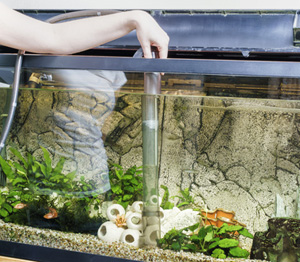
|
1. Clean Your Glass Regularly
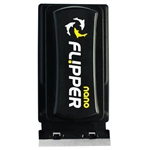
Keep your glass clean with a
magnet cleaner, such as a
Flipper,
Algae Free, or
Mag Float. But remember, the algae will just get into the filter or fall to the substrate (and the substrate and filters need to be cleaned). Only a
UV Sterilizer will neutralize the algae.
Cleaning with a scraper blade, which is an option with most of our magnet cleaners, can make cleaning hard calcium spots a breeze.
Check out our
Cleaning Glass Video on YouTube.
2. Clean Your Equipment With Citric Acid
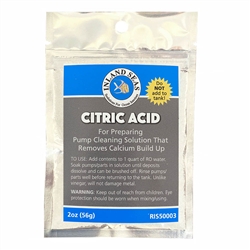
Over time, aquarium equipment can start to have mineral deposits or coralline algae build-up, which can hamper the performance. This can cause pump impellers to seize up, UV sterilizer sleeves to become opaque, protein skimmers to become clogged and chillers temperature probes to give incorrect readings. Keeping your pumps, heaters, chillers, protein skimmers, and UV quartz sleeves clean will lead to a longer life and better efficiency. We recommend using
Inland Seas Citric Acid to remove these deposits and build-up. After a quick soak in the citric acid solution, followed by a good brushing, deposits will start to dissolve and can be easily rinsed off.
You can even remove deposits from
empty glass and acrylic aquariums (
but NOT aquariums with live inhabitants).
Check out our
Cleaning With Citric Acid Video on YouTube.
3. Rinse Or Replace Your Mechanical Filter Media Weekly
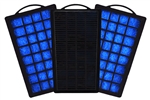
Your mechanical filter media will trap waste, it wonít eliminate it. When you clean the glass some of the waste going into the filter is that algae you scraped from the glass. Unless you clean or replace your media (filter sponges, filter floss, filter pads, etc) the waste will break down into harmful substances, including nitrate, that can increase algae growth.
Power filter and canister filter manufacturers often recommend you replace your filters every couple of months. What is more important is that you clean the filter cartridge weekly. We carry
replacement media for several popular canister filters and power filters.
4. Gravel Vac Weekly
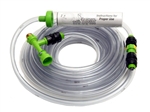
Some waste will not get into your filter and will drift down to the substrate. The best way to remove this waste is with a
gravel vac, such as the
Python No Spill Clean & Fill,
Aqueon Aquarium Water Changer, or
JBJ Instant Siphon Gravel Cleaner (for smaller tanks).
Check out our
Water Changes Video on YouTube.
5. Replenish With RO Water
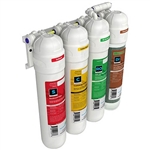
Always use purified or RO water for replacement water. Tap water can have high levels of nitrates and phosphates that will contribute to your algae growth. We carry
RO systems from
AquaticLife and
SpectraPure for tanks of all sizes.
You should also always use RO water when doing water changes and for mixing saltwater for water changes. Keep in mind, RO water does not have dissolved solidsóyouíll need to test for KH or alkalinity. Supplement as required.
6. Use UV Sterilization

A
UV sterilizer will sterilize free-floating algae. That is, when the algae is scraped off the glass or enters the water stream when gravel vacuuming the sterilizer will keep it from multiplying. It will also stop the spread of microorganisms from one fish/coral/invertebrate to another. We carry UV sterilizers for aquariums from 5 to 24,000 gallons. We have
UV sterilizers for smaller tanks and top-of-the-line UV sterilizers for larger tanks from
Lifegard Aquatics and
Aqua Ultraviolet.
If you have a reef tank and are worried about killing plankton, you can put your UV on a timer and run it only during the day.
Additional Advice For Keeping Your Aquarium Clean
Keep Your Bioload Reasonable
Most of the waste in your aquarium comes from your fish. Every aquarium has a higher density of fish than you will find in nature. Keep it to a minimum. There is an excellent bio-load calculator at
http://www.aqadvisor.com/
Water Movement
Water movement brings oxygen into the water. Itís also critical for keeping your aquarium clean, and itís best when water moves in multiple directions. When moving in multiple directions, like a wave, it will move the detritus from the various nooks and crannies in the aquarium into your filter/UV sterilizer/protein skimmer. Consider using a
wavemaker with your pumps to get the water moving in multiple directions.
Protein SkimmingWith saltwater tanks, a
protein skimmer will remove waste into a cup that is easy to clean. This is much better than a mechanical filter, which will trap waste that breaks down into nitrate and contribute to algae growth. Protein skimming is a requirement for all reef aquariums and is beneficial for fish-only saltwater tanks.
Chemical Filtration
Chemical filtration usually refers to carbon.
Carbon is highly porous and adsorbs heavy metals, odors, organic contaminants, pollutants, and medications from your aquarium water. It should be replaced every two months or when the water is yellow or has an odor to it.
There are also many chemical filtration products with mixed media such as
Chemi-Pure and
Clear FX Pro. FX Pro is a carbon with added resins that remove phosphates. Phosphates are a leading algae growth contributor.


































